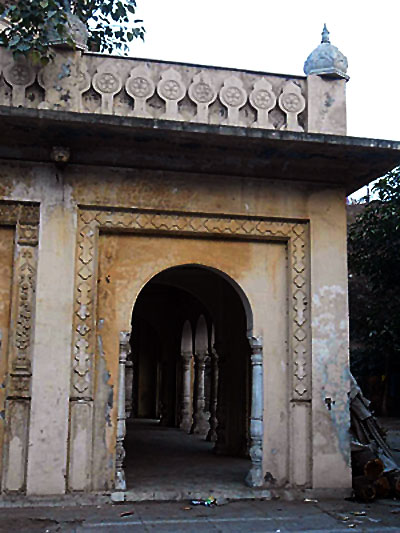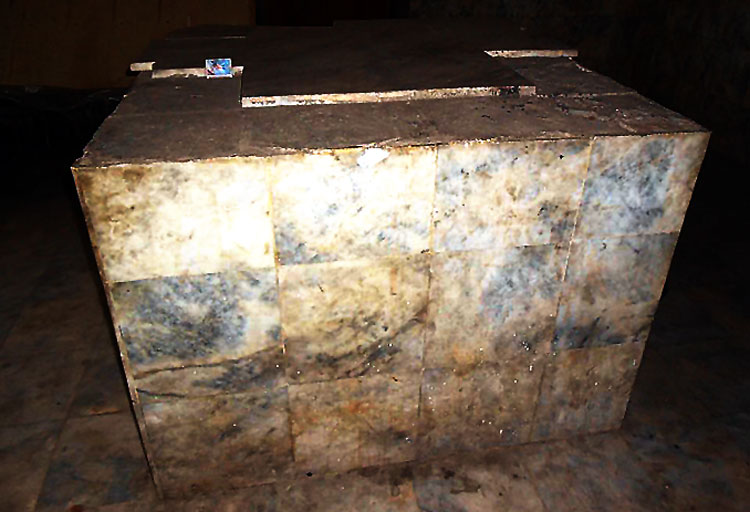Written by: Salma Chaudhry
Posted on: May 08, 2020 | 
Sir Ganga Raam's Samaadhi
Roaming the streets of old Lahore, one discerns long forgotten tales, some of them centuries old; it is what makes Lahore so fascinating. Even if you don’t immediately fall in love with this intriguing city, it will certainly occupy a special place in your heart; the old streets, the elderly man sitting in the corner and observing the passersby, the fortune teller on the footpath with his parrot, the scrumptious roadside food items, the petite girl running towards the khokha (tuck shop) to get toffees, and the boy with his kite. But what makes you marvel the most are the beautiful buildings from the Mughal, Sikh and British eras; some of them converted into homes, some into shops, some just abandoned, and others standing tall, as if they are calling for attention to reveal their stories.
 |
In the midst of these abandoned structures, there lies Sir Ganga Raam’s Samadhi (tomb). In the narrow streets near Karim Park, a little off Ravi Road is a white domed building that depicts splendor and rot, existence and bereavement, inextricably tied together in one place. A short walk from the main “Chhatri wale baba ji’s street (‘The umbrella vendor’s street’)”, the Samadhi stands out in the closely constructed houses.
Young boys playing cricket in the main patio of the tomb had little idea about the “modern architect of Lahore” (Sir Ganga Raam), and his invaluable contribution to the city. Upon my inquiry, they told me that the Samadhi was open, and I could just unlock the door myself and enter. “The Samadhi is in a dilapidated condition”, said one of them. The walls inside had been whitewashed, evidence of the fact that their original appearance was different. The backyard of the Samadhi is now for the domestic use of a family. “It was destroyed by the residents of the area after the Babri Masjid incident”, the boys told me. The original structure had a wide, vaulted dome and the whole facade was covered with elaborate carvings. It was a splendid design that resembled Sir Ganga Raam’s own style. The building was perhaps renovated after it had been damaged, but it was disappointing to see that no one was present at the Samadhi to take care of it. I couldn’t find any plaque which mentioned the name of Sir Ganga Raam or his story. No wonder the little boys I met outside had absolutely no clue as to whose ashes were buried inside. All they knew was that it was Ganga Raam’s Samadhi, and that there exists a hospital in the city with the same name.
Sir Ganga Raam, also known as the modern architect of Lahore, died in 1927 in London. His ashes were taken to the Ganges, and some of them were brought home to his city, Lahore.
 |
Marble structure where ashes are buried |
Despite the fact that most people today know little about him in Lahore, there exist many stories about his work as an architect and engineer, whose buildings have left an indelible mark on old Lahore. Many beautiful buildings on and around Mall Road were designed by this eminent personality, including the Lahore Museum, the General Post Office, and parts of educational institutions like Aitchison College and Mayo College of Arts (now the National College of Arts). He is also known as one of the greatest philanthropists of South Asia. Sir Ganga Raam’s most significant contribution is the Ganga Raam Trust Hospital. Initially founded as a dispensary, it was later developed into a hospital, and still exists as one of the biggest hospitals in Lahore, with a medical college associated with it as well. Born and brought up in British India, Ganga Raam was the first Indian graduate from Thomason College of Civil Engineering, today known as the Indian Institute of Technology, Roorkee.
With so many contributions to Lahore by this great man, it was indeed heartbreaking to see his tomb in a decrepit state, and the assault on his samadhi reminded me of Saadat Hasan Manto’s short story written at the time of Partition, about the statue of Sir Ganga Raam which was pelted with stones, covered in black coal tar and old shoes by an angry group of people. The man holding the old shoes was shot by the police in an attempt to disperse the mob. As he fell, the same crowd shouted, “Take him to Ganga Raam Hospital”. Perhaps Manto had realized the complexities and problems of this society in 1947, that seem to escape us as a nation.
You may also like: